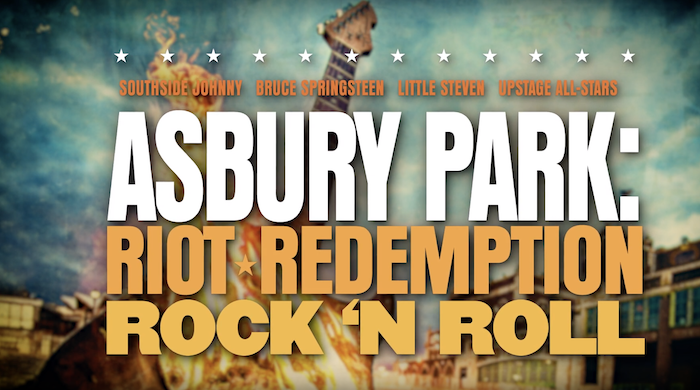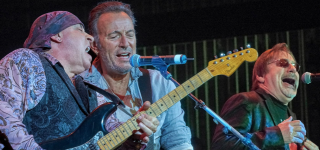 Like many who attended the first night of the limited theatrical release of Asbury Park: Riot, Redemption, Rock ‘N Roll, this attendee expected a smorgasbord of live performances from Jersey’s favorite sons. What I did not expect was a compelling story of urban renovation.
Like many who attended the first night of the limited theatrical release of Asbury Park: Riot, Redemption, Rock ‘N Roll, this attendee expected a smorgasbord of live performances from Jersey’s favorite sons. What I did not expect was a compelling story of urban renovation.
The film is neatly divided into thirds. The first third is a compelling history of how Asbury Park, N.J., came to be a fairly insular hotbed of music: At one point 73 music clubs served the area. The crux of it all was the Upstage Club, where musicians of all stripes came to intermingle, jam and delight the area’s youth.
Whereas the town was literally divided racially by train tracks, the music at the Upstage Club knew no color boundaries.
Springsteen (who was added to the film after seeing a rough cut that did not include his talking head insights) is first seen via stills at the Upstage Club as a skinny, wild-haired guitar slinger able to command the stage deep into the wee hours of the morning. Fellow traveler Steve Van Zandt is equally commanding, and his interviews add droll insight. Modern day recollections from the likes of Garry Tallent, “Southside Johnny” Lyon, Max Weinberg, David Sancious, Joe Grushecky, Kay Harris and Vini “Mad Dog” Lopez paint the picture well.
Related: An appreciation of Springsteen’s Born to Run
The middle third of the film describes the devastating race riot of July 4, 1970. With countless businesses going up in flames, never to rebuild, Asbury Park slides into urban decay. Within a few years Springsteen will improbably catch the ear of Columbia Records talent scout John Hammond and release his first album, poignantly entitled Greetings From Asbury Park, NJ. The album’s title is seen often in the film, on buildings and posters. The glorious photo of Springsteen holding the album for the first time also appears a few times; it is a magnificent payoff moment after years of endless club gigs.
The last third of the film speaks to the area’s improbable resurgence. A gay club and a new recording studio seem to be catalysts for Asbury Park’s long journey to, well … redemption. Although a long way from the halcyon days portrayed in the film’s first third, Asbury Park now sports cafes, restaurants and chic shops. The poignant clips of the Lakehouse Junior Pros, a group of pre-teen musicians expressing their love of learning to play instruments, reveal the gap that crippled school budgets can’t fill. And when some of those kids are able to jam with the film’s interview subjects in a live gig, the circle seems almost complete.
For screening times of Asbury Park: Riot, Redemption, Rock ‘N Roll, go here.
Watch a preview of he film







No Comments so far
Jump into a conversationNo Comments Yet!
You can be the one to start a conversation.